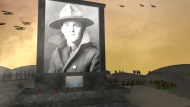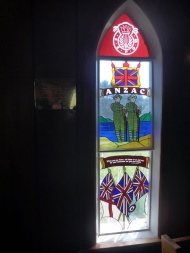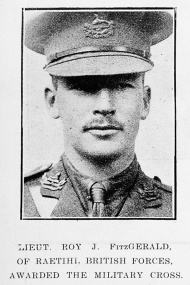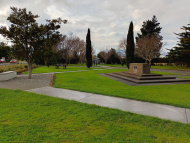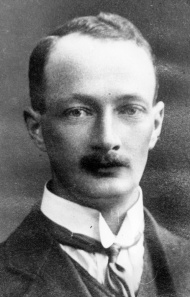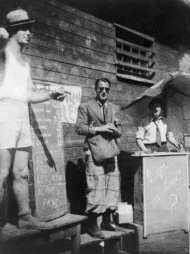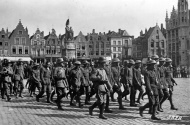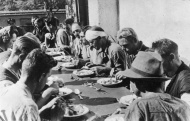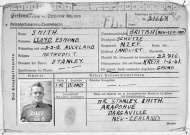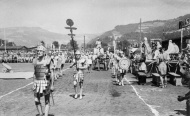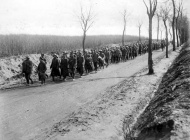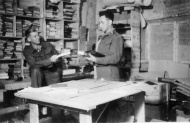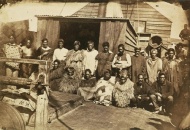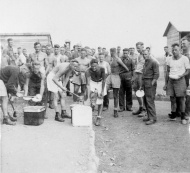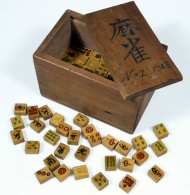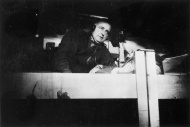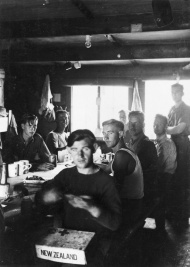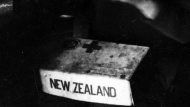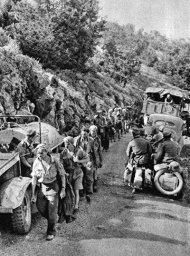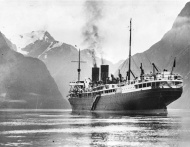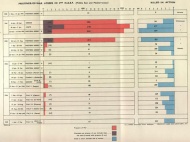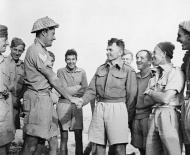Events In History
-
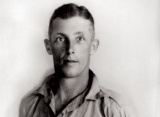 28 February 1945Kiwi soldier faces firing squad
28 February 1945Kiwi soldier faces firing squadAfter more than a year on the run in northern Italy, New Zealand prisoner of war David Russell was recaptured and executed. His courage in the face of death earned him the first George Cross awarded to a member of New Zealand’s military. Read more...
-
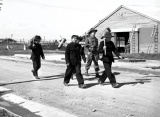 25 February 194349 killed in Featherston POW incident
25 February 194349 killed in Featherston POW incidentJust outside the Wairarapa town of Featherston, a memorial garden marks the site of a Second World War incident that resulted in the deaths of 48 Japanese prisoners of war and one guard. Read more...
-
 17 August 1942Attack on the Nino Bixio
17 August 1942Attack on the Nino Bixio118 New Zealand prisoners of war died when the Italian transport ship Nino Bixio was torpedoed by a British submarine in the Mediterranean. Read more...
Articles
Prisoners of War
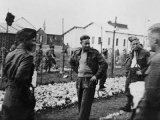
During the Second World War New Zealanders became prisoners of war in large numbers. Most Kiwi POWs were soldiers captured in Greece, Crete and North Africa. In total, more than 8000 were held in captivity - one in 200 of New Zealand's population at the time.
-
Page 2 – Capture
Most of New Zealand's Second World War POWs were captured in the European theatre in the early stages of the war. Only about 100 New Zealand servicemen fell into Japanese hands
-
Page 3 – Incarceration
The incarceration of most New Zealand army POWs began in transit camps where facilities were rudimentary in the extreme. Generally little more than holding pens, they were
-
Page 4 – Daily life
POW camps tended to be rather bleak places. They could not, for security reasons, have trees and other greenery growing in them, although many prisoners did receive seeds from
-
Page 5 – The Tiki times
The Tiki Times was a hand- printed and illustrated newspaper produced weekly at prisoner of war camp E535, Milowitz, Poland from August 1944 to January 1945. Milowitz was a
-
Page 6 – Forced marches
As the war drew to a close, POWs in the more eastern German camps were often gathered together at short notice and marched off under guard in a westerly direction - away
-
Page 7 – Camp cookers
A reprint of an article written by John Frizell (ex-POW) about the ovens used in POW camps during the Second World War
-
Page 8 – Liberation
The prospect of liberation was key to POWs' morale. But a great many had no intention of passively awaiting the arrival of Allied forces, an attitude that was reinforced by the
-
Page 9 – Repatriation
Attention was given to the problem of repatriating POWs long before 1945. A New Zealand repatriation unit was established in the United Kingdom under the command of Major-
-
Page 10 – The camps
A list of prisoner of war camps in which New Zealand POWs were held during the Second World War
-
Page 11 – Further information
This web feature was written by Megan Hutching and Ian McGibbon and produced by the NZHistory team.BooksD.O.W.
Featherston incident
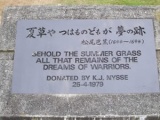
Two kilometres north of the quiet little Wairarapa town of Featherston a small memorial garden marks the site of a riot that resulted in the deaths of 48 Japanese prisoners of war and one guard.
- Page 1 - Incident at FeatherstonTwo kilometres north of the quiet little Wairarapa town of Featherston a small memorial garden marks the site of a riot that resulted in the deaths of 48 Japanese prisoners of war
New Zealand and Le Quesnoy

It was the New Zealand Division's final action of the First World War. On 4 November 1918, just a week before the Armistice was signed, New Zealand troops stormed the walled French town of Le Quesnoy. The 90 men killed were among the last of the 12,483 who fell on the Western Front.
- Page 5 - Battle accounts, Private NimmoCaptain James Matheson Nimmo joined 3rd Battalion, 3rd New Zealand (Rifle) Brigade on 27 September
War oral history programme
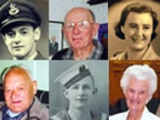
Information about the now completed From Memory oral history project, including advice on how to interview war veterans
- Page 10 - Notes and questions, POWsAdvice and suggested questions for interviewing veterans who were prisoners of
The Salonika campaign
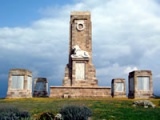
23 October is the anniversary of the 1915 sinking of the Marquette with the loss of 32 New Zealanders, including 10 nurses. They were en route from Egypt to the Greek port of Salonika as New Zealand’s contribution to the little-known Allied campaign in the Balkans
- Page 6 - Hidden AnzacsA number of New Zealanders served in the British imperial forces at Salonika rather than with the New Zealand Expeditionary Force.
Hospital ships
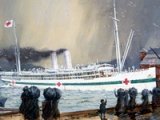
The Maheno and Marama were the poster ships of New Zealand's First World War effort. Until 1915 these steamers had carried passengers on the Tasman route. But as casualties mounted at Gallipoli, the government - helped by a massive public fundraising campaign - converted them into state-of-the-art floating hospitals.
- Page 6 - Later service and legaciesThe Marama missed Gallipoli, reaching the Mediterranean a few weeks after the Allies abandoned the peninsula. The ships’ service pattern would now be dominated by long voyages
Biographies
-
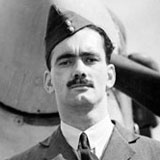 Clouston, Wilfrid Greville
Clouston, Wilfrid Greville
Wilfrid Greville Clouston was one of the first New Zealand air aces of the Second World War. He survived the Battle of Britain only to spend the majority of the war in a Japanese prisoner of war camp.
Read more...
Related keywords
- remuera
- WW1 stories
- kerikeri
- last post stories
- royal air force
- salonika campaign
- WW1
- nurses
- german army
- featherston
- japanese
- railways
- WW1 home front
- wellington city
- italian campaign
- battle of cassino
- ottoman empire
- aviation
- gallipoli campaign
- chunuk bair
- wellington infantry regiment
- hospital ships
- marama
- battle of the somme
- maheno (hospital ship)
- health
- casualties
- rangiriri
- waikato wars
- new zealand wars
- WW2
- horse racing
- western front
- germany
- central powers
- belgium
- le quesnoy liberation
- armistice
- letters
- radio broadcasts
- war objects
- food
- maps
- george cross
- david russell
- leisure
- publishing
- sport
- artillery
- trenches
- oral history
- pacific war
- interviewing veterans
- photography
- wilfred weakly
- north african campaign
- reginald miles
- james hargest
- battle of britain
- wilfrid clouston
- shipping
- cooking
- jack hinton
- memorials
- red cross
- russia
- drama
- art
- navy
- merchant navy
- royal new zealand air force
- battle for crete
- DDay
- monowai
- anne frank
- statistics
- john denvir
- frenku rabel
- weapons
- greece
- riots
- home front
- charles upham
- victoria cross
-
Main image: St Lukes memorials, Remuera
On 21 December 1919 a handsomely carved oak roll of honour was unveiled at St Lukes Presbyterian Church, Remuera.


